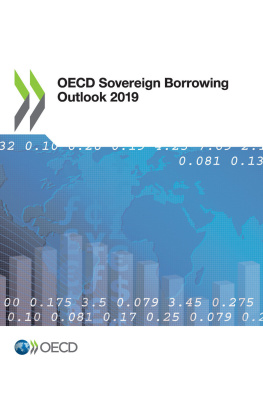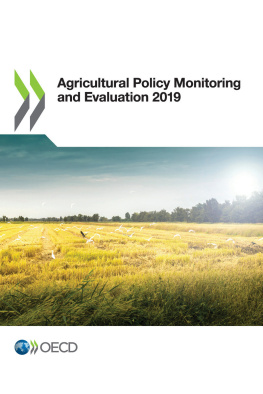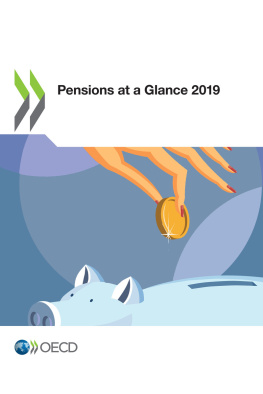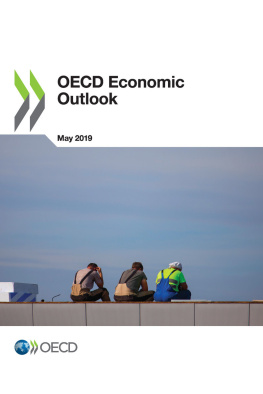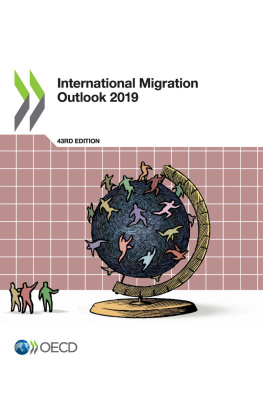OECD - OECD Sovereign Borrowing Outlook 2019
Here you can read online OECD - OECD Sovereign Borrowing Outlook 2019 full text of the book (entire story) in english for free. Download pdf and epub, get meaning, cover and reviews about this ebook. year: 2019, publisher: OECD Publishing, genre: Politics. Description of the work, (preface) as well as reviews are available. Best literature library LitArk.com created for fans of good reading and offers a wide selection of genres:
Romance novel
Science fiction
Adventure
Detective
Science
History
Home and family
Prose
Art
Politics
Computer
Non-fiction
Religion
Business
Children
Humor
Choose a favorite category and find really read worthwhile books. Enjoy immersion in the world of imagination, feel the emotions of the characters or learn something new for yourself, make an fascinating discovery.
OECD Sovereign Borrowing Outlook 2019: summary, description and annotation
We offer to read an annotation, description, summary or preface (depends on what the author of the book "OECD Sovereign Borrowing Outlook 2019" wrote himself). If you haven't found the necessary information about the book — write in the comments, we will try to find it.
OECD: author's other books
Who wrote OECD Sovereign Borrowing Outlook 2019? Find out the surname, the name of the author of the book and a list of all author's works by series.
OECD Sovereign Borrowing Outlook 2019 — read online for free the complete book (whole text) full work
Below is the text of the book, divided by pages. System saving the place of the last page read, allows you to conveniently read the book "OECD Sovereign Borrowing Outlook 2019" online for free, without having to search again every time where you left off. Put a bookmark, and you can go to the page where you finished reading at any time.
Font size:
Interval:
Bookmark:
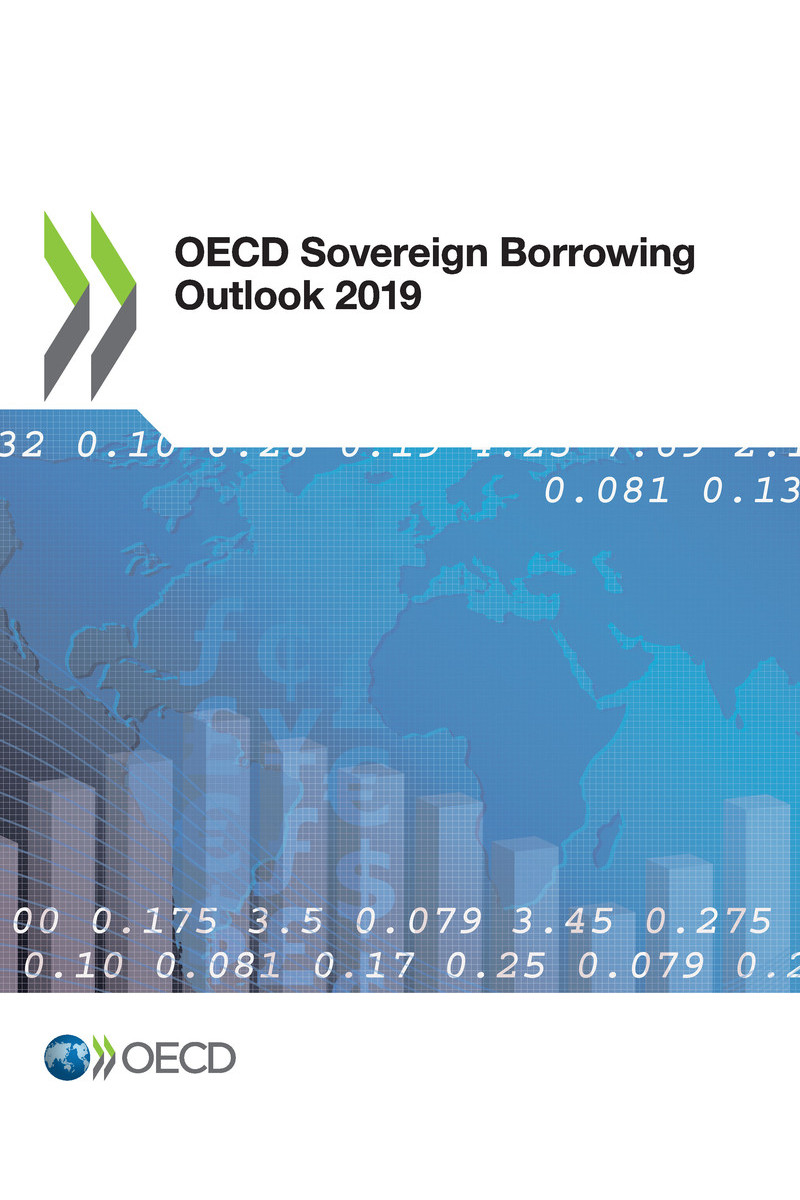
OECD (2019), OECD Sovereign Borrowing Outlook 2019 , OECD Publishing, Paris, https://doi.org/10.1787/aa7aad38-en .
The 2019 edition of the OECD Sovereign Borrowing Outlook provides data, information and background on sovereign borrowing needs and discusses funding strategies and debt management policies for the OECD area and country groupings, including:
Gross borrowing requirements
Net borrowing requirements
Central government marketable debt
Liquidity in sovereign bond markets
The importance of understanding the investor base
Dealing with public debt management under stressed market conditions
Recent experiences in Greece, Iceland, Ireland and Portugal
The information in this publication is based on responses received to an annual survey on the borrowing needs of OECD governments circulated by the OECDs Bond Market and Public Debt Management Unit. This includes an update on trends and developments associated with sovereign borrowing requirements, funding strategies, market infrastructure and debt levels from the perspective of public debt managers. The Outlook makes a policy distinction between funding strategy and borrowing requirements. Central government marketable gross borrowing needs, or requirements, are calculated on the basis of budget deficits and redemptions. Funding strategy entails decisions on how borrowing needs are going to be financed using different instruments (e.g. long-term, short-term, nominal, indexed, etc.) and which distribution channels (auctions, tap, syndication, etc.) will be used.
Comments and questions should be addressed to the Bond Markets and Public Debt Management Unit within the Insurance, Private Pensions and Financial Markets Division of the OECD Directorate for Financial and Enterprise Affairs (e-mail: .
The OECD Sovereign Borrowing Outlook is part of the activities of the OECD Working Party on Public Debt Management, incorporated in the programme of work of the Directorate for Financial and Enterprise Affairs Bond Markets and Public Debt Management Unit. This Borrowing Outlook was prepared by the OECD Bond Markets and Public Debt Management Unit (Fatos Koc (Head of the Unit) and Gary Mills (Statistician)). Serdar Celik (Senior Policy Analyst), Alessandro Maravalle (Economist), and Lukasz Rawdanowicz (Senior Economist) have provided their valuable feedback to Chapter 1. Hiroshi Ohata (Ministry of Finance, Japan) and Johannes Schluetz (Finanzagentur, Germany) have provided their valuable feedback to Chapter 2. The Debt Management Offices of Greece, Iceland, Ireland and Portugal provided extensive data and comments in preparation of Chapter 3. The following Steering Committee members Teppo Koivisto, (Chair; Treasury, Finland); Sir Robert Stheeman (Debt Management Office, the United Kingdom); and Davide Iacovoni (Treasury, Ministry of Economy and Finance, Italy) have provided their comments and suggestions to this edition. Pamela Duffin (Communications Manager) and Edward Smiley (Publications Officer) have supported the whole team with invaluable publishing guidance and proof reading expertise.
More than a decade on from the Global Financial Crisis, while debt-to-GDP ratios are back around pre-crisis levels in some countries, debt burdens have continued to climb in others, exceeding 100% of GDP in some cases. The challenges sovereign debt managers are confronting in an environment of high debt burdens and relatively tighter financial conditions have been compounded by recent political uncertainties. OECD governments will also need to refinance around 40% of their outstanding marketable debt over the next three years.
This means that most countries are focused on mitigating refinancing risk, maintaining flexibility in funding programmes, and broadening the investor base. In countries where financing requirements are limited and declining, sovereign debt managers face a positive set of challenges. For example, the minimal optimal size of outstanding sovereign debt required to maintain a vibrant government bond market and facilitate the implementation of monetary policy is currently under discussion in a few countries.
Significant shifts in both the investor base and investor behaviour have occurred in the past decade. This can be attributed in part to quantitative easing programmes and regulatory changes. Funding challenges in the post-crisis environment mean that a broad and diverse investor base is more essential than ever to support liquidity, depth and stability in government securities markets. This edition of the Outlook provides insights into access to investor-base information and key trends in the investor base. It analyses the implications of these changes for debt management strategies, in particular with respect to issuance plans and communication practices.
Sovereign issuers need granular and timely investor-base data to be able to better understand changes in the investor base, to make informed decisions on issuance plans and to adapt their investor relations programmes. A survey of primary market developments reveals that a majority of OECD countries receive detailed information on domestic investors, but not necessarily on foreign investors. For example, the foreign non-bank category usually covers a wide range of investors with significantly different investment mandates, including hedge-funds and pension funds. Sovereign issuers would benefit from reinforcing their investor monitoring capabilities, as well as engaging in frequent and consistent dialogue with investors.
Font size:
Interval:
Bookmark:
Similar books «OECD Sovereign Borrowing Outlook 2019»
Look at similar books to OECD Sovereign Borrowing Outlook 2019. We have selected literature similar in name and meaning in the hope of providing readers with more options to find new, interesting, not yet read works.
Discussion, reviews of the book OECD Sovereign Borrowing Outlook 2019 and just readers' own opinions. Leave your comments, write what you think about the work, its meaning or the main characters. Specify what exactly you liked and what you didn't like, and why you think so.

